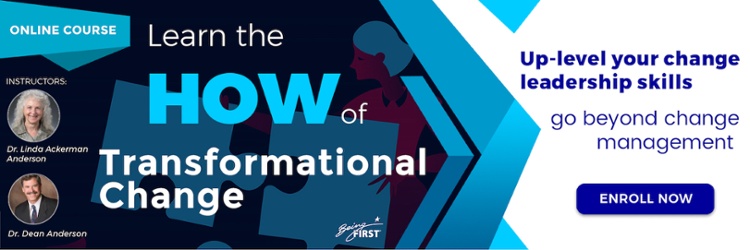Change initiatives need the same clear and thoughtful governance as your organization’s operations. It may seem obvious that establishing change governance management is important for a change initiative to be successful, but planning for it is often skipped in the rush to get started. Leaders may press for a plan of action that does not include effective governance to get a solution designed and deployed as quickly as possible. This is faulty thinking! For governance to be successful, it must be created from the very beginning to enable speed, efficiency, and effectiveness in designing and executing change and transformation.
The Cost of Poor Change Governance
Setting up a change initiative without effective change governance can radically slow progress. Without governance management delays may be caused by the resulting confusion about who is in charge of what, political in-fighting, and back-tracking on decisions made. People may fail to take action if they are unclear about who is authorized to make decisions, or who should be getting informed about key issues.
The Four Elements of Good Governance Principles
Good change governance principles address four distinct elements. Each of these is required to expedite a rapid and coordinated change initiative launch.
-
Clear change leadership roles, well-defined, staffed, and coached
-
An effective and efficient change leadership structure that organizes and coordinates the work of the change roles and actions
-
Clear decision making rights and process
-
Clear relationship between the running of the operation and leading the initiative
Clear Leadership Roles for Change
Consciously designed change governance includes leadership roles that are well defined. Clear responsibilities and deliverables are required for each role. Best practice leadership roles for change include:
- Sponsor
- Change process leader
- Change leadership team
- Initiative leads
- Project teams
- Change Consultants
Once leadership roles have been defined, they must be staffed appropriately. Before assigning someone to a role, ensure that they have the skills and time to achieve those responsibilities and deliverables. Often the costliest problem we see is lack of capacity and capability to be successful is a change leadership role.
We also recommend providing coaching to people filling the leadership roles. Coaching supports leaders in “walking the talk” and demonstrating the changes that you are intending to make.
An Effective and Efficient Change Leadership Structure
In addition to understanding their roles, leaders must have a structure that defines accepted ways of relating to one another and allows them to act and lead in a coordinated fashion. Your governance structure might be a hierarchical structure that runs in parallel to the normal operating structure, or a network of engaged people, or both. Agile structures are helpful when dealing with change.
When creating your change leadership roles and meeting protocols, consider the following questions:
-
What will the people on each team be assigned to do?
-
Do the roles you have created cover all the essential leadership requirements for your change?
-
How often will people meet, communicate, manage the information of the initiative?
-
How will you monitor progress and ensure the right work is being done?
Clear Decision Making Rights and Process
The people filling your change leadership roles need to agree on decision levels and authority, and the decision style and process that best supports the change. This is particularly important if your change initiative requires a shift in culture around how power is exercised and decisions are made. How you govern your initiatives must model your desired future state culture. All parties need to align to the new decision-making cultural norms, while letting go of the old (e.g. all decisions are made at the top). Otherwise, people will be skeptical of the initiative because the leaders will be pronouncing the virtues of one set of cultural norms, (e.g. more empowerment to lower levels of management), but modeling the opposite.
Clear Relationship Between Operations and Change Initiatives
It is advisable to clarify the ways in which those in change leadership positions will interface with those who run the operation. This should begin with clarifying the relationship between the executive team (for major enterprise changes) and the change leadership team.
Frequently the same people are on both teams, but the teams have very different charters and make very different types of decisions. These people must wear their “two hats” skillfully, as one runs the business and one changes that very business. It is essential to launch the change leadership team as a new team with different authorities and meeting cadence than its members’ operating roles. Clarity between the two is essential. The change effort will undoubtedly have an impact on operations – taking resources, time, and people’s attention required to make the change. Such pinch points are quite predictable, so having pre-determined agreements on how to handle pinch points in ways that best serve the future of the business is important.
Given all the above guidance, how well have you set up your initiative?
Related Video:
The Importance and Value of Transformational Change Governance
In this snippet from our online program, Leading Transformational Change, Dr. Linda Ackerman Anderson explores the value of effective transformational change governance and why significant shifts are needed in sponsors, change leaders and executives when launching and leading transformational change projects.
Related eBook:
The Ten Key Strategies for Leading Transformation

Through 40 years of observing and supporting large-scale change and transformation in Fortune 500, government, global NGOs and public service organizations, we’ve identified these ten Best Practice strategies for leading transformation successfully.
Please complete the form to download your eBook:
Want to Make Sure Your Transformation is on the Right Track?
 |
Join us for our upcoming webinar: How to Use a Change Audit to Avoid the Cost of Rework During Transformation and discover what’s needed for your change audit to reap the rewards of a faster, cheaper and more successful change initiative. |
You’ll learn how a change audit can:
- Highlight what it will take for your change to be set up for success
- Raise leaders' awareness of their change leadership strengths and weaknesses – for this initiative and likely all others
- Serve as a status check on morale and progress during the change
- Wake up your organization to the need to take the change more seriously
- Signify the importance of engaging your people in creating their future in ways that work for them
- Strengthen leadership's intention to involve and respect people's input to the initiative’s overall success
How to Use a Change Audit to Avoid the Cost of Rework During Transformation
Thursday, April 28, 2022 | 10-11am Los Angeles, 1-2pm New York
Please complete the form to secure your seat. We will email you a confirmation with instructions for how to join us on April 28. All who register will receive a copy of the recording. Can't make it live? Click here to request a link to the recording.

